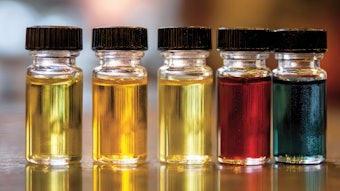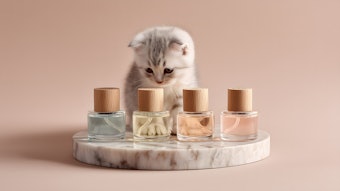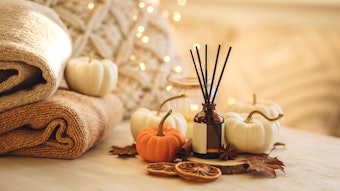A recent contribution on perfumery notes by H.-M. Hoffmann dealt with the Chypre type, a very fine combination of citrus and woody-mossy notes. Additional herbaceous nuances such as lavender are thereby often encountered. In the formula given by that author we see, for instance, in the so-called old-fashioned type, a dosage of 1.6% of lavender oil; in a second Chypre-type, 5% of lavandin oil. Thus, it becomes clear that it is not lavender oil alone which has to be discussed. When looking at the perfumistic effects reviewed under the heading of “lavender,” we encompass the whole group: lavender oil itself (Lavandula offlcinalis Chaix or L. vera DC), spike lavender oil (L. latifolia Vill.) and Iavandin oil (hybrid of L. officinalis x L. latifolia ViIl.), the latter having by far the highest consumption in perfumery.
Lavender is a very old, agrestic-type fragrance. In ancient times “Eaux de Iavande” existed with up to 60% of lavender oil, but today the lavender group is better represented by its combination with other appropriate ingredients. As mentioned above, small percentages support the complex of bergamot and oak moss in a definite way within a great number of Chypre perfume compositions. Higher percentages are found in Fougère-type perfumes which often belong to one of the most successfully growing market segments, the men’s lines.
Fields of Application
Men’s Lines
Today, it is hard to find modern men’s lines without a lavender top note in skillful combination with other natural or synthetic perfumery raw materials attributing freshness in a virile manner. Some of the most famous eaux de toilette are Azzaro pour homme with a distinct lavender top note, Brut (Fabergé) where the lavender note is combined with anise, lemon, sweet basil and bergamot notes, Captain (Molyneux) or Grès Monsieur Sport both exhibiting a combination of lavender with bergamot. The same complex is blended with armoise in the top note of Jules (Dior).










